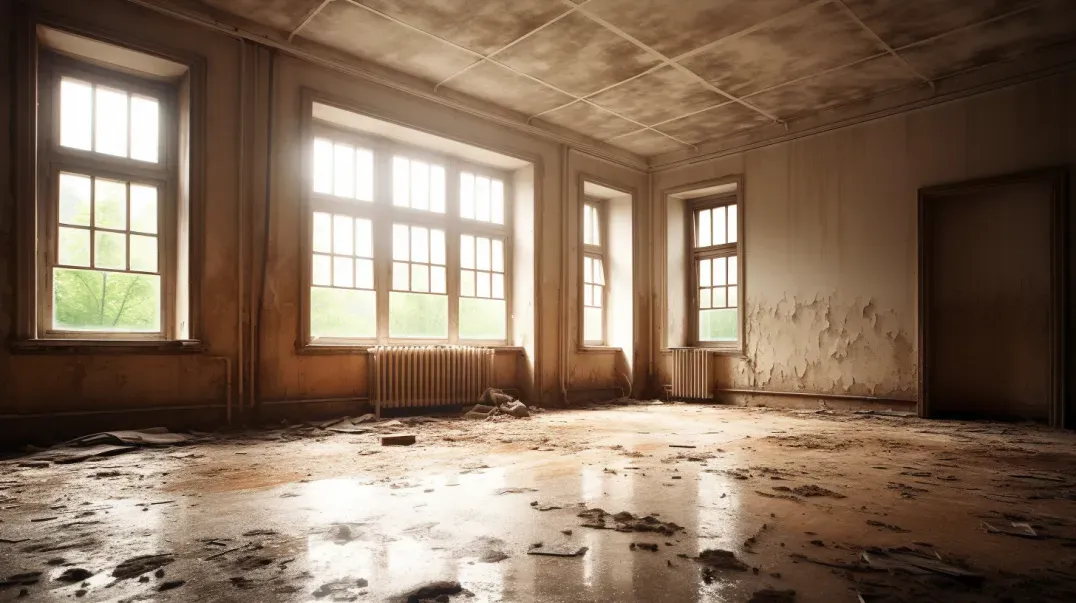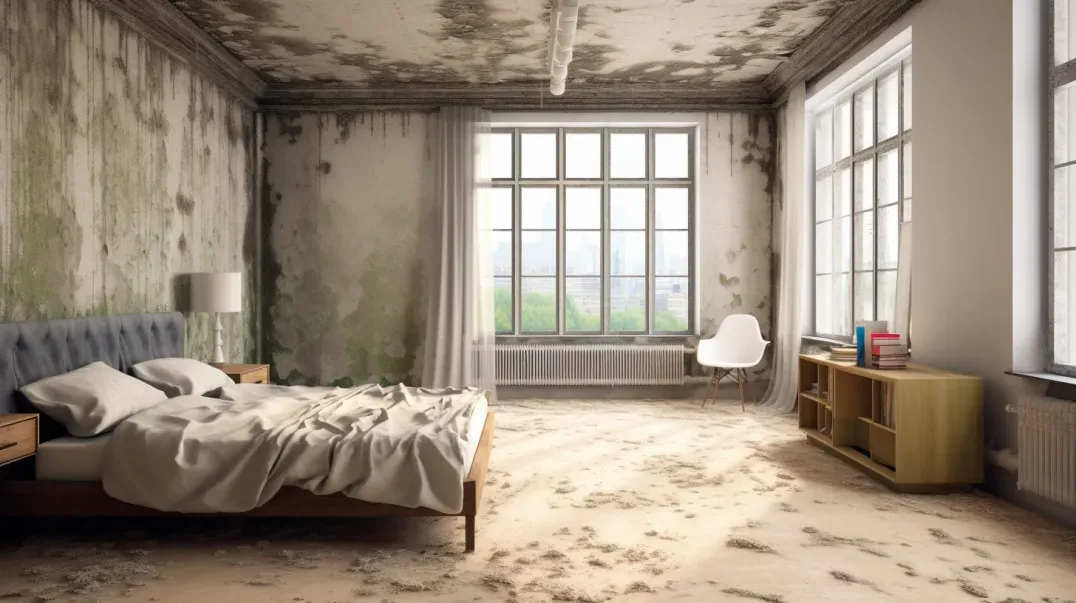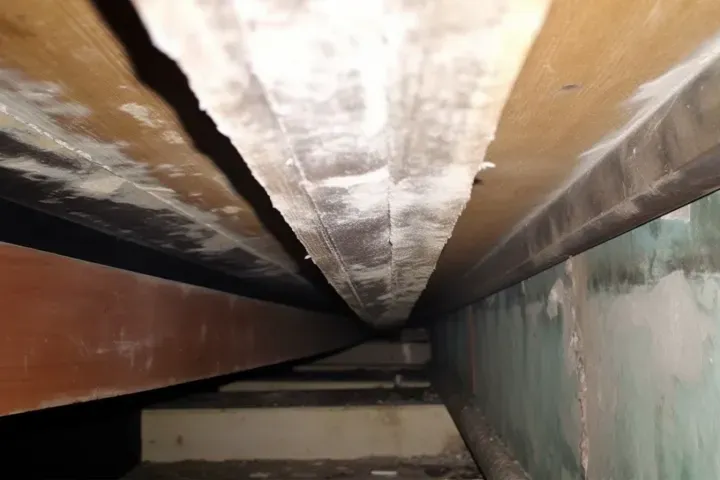Mold vs. Mildew in Crawl Spaces
Welcome to our insightful exploration into the world of mold and mildew, two of the most common issues plaguing crawl spaces in homes. While often used interchangeably, mold and mildew are distinct entities, each requiring specific approaches for effective treatment. In this blog, we delve into the nuances of mold and mildew, their prevalence in crawl spaces, and why understanding their differences is crucial for homeowners seeking to maintain a healthy and safe living environment.
Mold and mildew thrive in crawl spaces due to the typically damp and poorly ventilated conditions found in these hidden areas beneath our homes. They not only pose a risk to the structural integrity of the property but also to the health of its inhabitants. Mold, with its potentially toxic varieties, can lead to serious health issues, while mildew, though less harmful, can cause unpleasant odors and degrade the quality of living spaces.
Recognizing whether you're dealing with mold or mildew in your crawl space is the first step in tackling these issues effectively. Each requires a different method of remediation and prevention. This blog aims to equip you with the knowledge to identify mold and mildew accurately, understand their implications, and take appropriate action to eradicate them from your crawl space.
Join us as we navigate the complexities of mold and mildew in crawl spaces, offering expert insights and practical solutions. Our goal is to empower you with the information needed to effectively address these common issues, ensuring your home remains a healthy and structurally sound haven.
What is Mold?
Mold is a common issue in many homes, particularly in areas like crawl spaces. Understanding what mold is, its characteristics, and the risks it poses is crucial for homeowners. This section provides a detailed look at the nature of mold, its growth patterns, and the types often found in crawl spaces, along with an introduction to the health and structural risks associated with mold.
Characteristics of Mold
Description of Mold, Its Growth Patterns, and Common Types Found in Crawl Spaces
Mold is a type of fungus that reproduces through spores and thrives in moist environments. It can grow on various surfaces, including wood, paper, carpet, and food. Key characteristics of mold include:
- Appearance: Mold appears in a range of colors, including black, green, white, and orange. It often looks like a stain or smudge and can have a fuzzy or slimy texture.
- Growth Patterns: Mold grows best in warm, damp, and humid conditions. It can spread rapidly, especially in confined spaces like crawl spaces.
- Common Types in Crawl Spaces: The most common types of mold found in crawl spaces include Aspergillus, Penicillium, Cladosporium, and the potentially toxic Stachybotrys chartarum, commonly known as black mold.
Health and Structural Risks of Mold
Introduction of Potential Health Risks and Damage to Property Caused by Mold
Mold poses several risks to both health and property:
- Health Risks: Exposure to mold can cause a variety of health issues, particularly for individuals with allergies, asthma, or compromised immune systems. Symptoms can include respiratory problems, nasal and sinus congestion, eye irritation, throat irritation, coughing, and skin rashes.
- Structural Damage: Mold can damage the structural integrity of a home. It feeds on organic materials like wood and drywall, leading to deterioration and weakening of these materials. Over time, this can result in significant damage to the property, requiring costly repairs.
Understanding these risks is essential for homeowners to take timely action in addressing mold issues in their homes, particularly in vulnerable areas like crawl spaces.
What is Mildew?
Mildew is a common fungal issue that can affect homes, particularly in moist and warm environments. While often confused with mold, mildew has distinct characteristics and implications. This section aims to clarify what mildew is, describe its appearance and typical locations, and explore the potential health effects and surface damage it can cause.
Characteristics of Mildew
Description of Mildew, Including Its Appearance and Typical Locations
Mildew is a type of fungus, closely related to mold, and is often found in damp and warm environments. Key characteristics include:
- Appearance: Mildew usually appears as a thin, flat growth that remains on the surface of a moist area. It is typically white, gray, or yellow and turns black or brown as it ages. Unlike mold, mildew doesn't penetrate the surface of the material it grows on.
- Typical Locations: Commonly found in damp areas, mildew frequently grows on organic materials like paper, leather, fabrics, and surfaces in bathrooms, kitchens, and basements. It thrives in areas with high humidity and poor ventilation.
Health and Surface Damage Risks of Mildew
Potential Health Effects and Surface Damage Caused by Mildew
While mildew is generally less harmful than mold, it can still pose risks:
- Health Effects: Exposure to mildew can cause respiratory issues and allergic reactions, especially in individuals with asthma or allergies. Symptoms may include coughing, throat irritation, and nasal congestion.
- Surface Damage: Mildew can cause discoloration and deterioration of surfaces, particularly on fabric, paper, and leather items. If left unchecked, it can weaken or damage these materials, leading to the need for repairs or replacements.
Understanding the nature of mildew, its potential impact on health, and the risks it poses to surfaces is important for homeowners. This knowledge can guide effective cleaning and prevention strategies to maintain a healthy and well-maintained home environment.
Key Differences Between Mold and Mildew
Understanding the differences between mold and mildew is crucial for effective identification and treatment. While both are types of fungi commonly found in homes, particularly in crawl spaces, they have distinct characteristics. This section explores the visual and textural differences between mold and mildew, as well as their growth patterns and the areas they typically affect.
Appearance and Texture
Visual and Textural Differences Between Mold and Mildew
Mold and mildew can be distinguished by their appearance and texture:
- Mold: Mold usually appears as irregularly shaped spots that can have various colors like green, black, brown, orange, or purple. It has a fuzzy or slimy texture and tends to penetrate the surface of the material it grows on.
- Mildew: Mildew often presents as flat and powdery and is usually white, yellow, or gray, turning brown or black as it matures. It typically grows on the surface of moist areas, giving it a flaky or powdery appearance.
Growth Patterns and Affected Areas
How and Where Mold and Mildew Typically Grow in Crawl Spaces
The growth patterns and preferred environments of mold and mildew vary:
- Mold Growth Patterns: Mold thrives in damp, warm environments and can spread quickly across surfaces. It commonly grows on organic materials like wood, drywall, and fabric, making crawl spaces with moisture issues a prime location for mold infestations.
- Mildew Growth Patterns: Mildew prefers flat surfaces and often grows in areas with high humidity, such as on shower walls, window sills, and in crawl spaces with poor ventilation. It is more surface-oriented and does not penetrate the material it grows on as deeply as mold.
Recognizing these differences is key to addressing the specific fungal issue in your crawl space. While both mold and mildew require moisture to grow, their distinct characteristics necessitate different approaches for removal and prevention.
Detecting Mold and Mildew in Crawl Spaces
Detecting mold and mildew in crawl spaces is crucial for maintaining a healthy home environment. Both can cause various issues, but their early detection and identification can lead to more effective treatment. This section outlines the specific signs that indicate the presence of mold and mildew in crawl spaces.
Signs of Mold in Crawl Spaces
Specific Indicators That Suggest the Presence of Mold
Mold in crawl spaces can be identified by several key indicators:
- Visible Growth: Look for irregular spots or patches in different colors like black, green, or white. Mold often appears as a fuzzy or slimy layer on surfaces.
- Musty Odor: A strong, musty smell is a common sign of mold. This odor can be particularly noticeable in enclosed spaces like crawl spaces.
- Water Damage: Areas with water damage, such as staining, warping, or discoloration of wood and other materials, are likely spots for mold growth.
- Excessive Humidity: High humidity levels in a crawl space can create a conducive environment for mold.
- Health Symptoms: If residents experience increased allergies or respiratory issues, it could indicate mold presence in the home, particularly in the crawl space.
Signs of Mildew in Crawl Spaces
Distinct Signs That Point to Mildew Growth
Mildew, while less harmful than mold, also presents specific signs:
- Powdery Appearance: Mildew often looks like a powdery or fluffy white or gray patch on surfaces. It can turn yellow, brown, or black over time.
- Flat Pattern: Unlike mold, mildew grows in a flat pattern and is typically found on the surface of damp materials, such as wood or wallpaper.
- Odor: While mildew can produce a musty smell, it is usually less intense than the odor caused by mold.
- Location: Mildew is commonly found in areas with surface moisture and poor ventilation, making crawl spaces a common site for mildew growth.
Health Implications of Mold and Mildew
The presence of mold and mildew in homes, particularly in crawl spaces, can have significant health implications. While often considered primarily a cosmetic issue, both mold and mildew can pose health risks, especially when exposure is prolonged. This section delves into the specific health risks associated with mold and mildew exposure.
Health Risks Associated with Mold
Detailed Discussion on Health Issues Caused by Mold Exposure
Mold exposure, especially in damp and poorly ventilated environments like crawl spaces, can lead to various health issues:
- Respiratory Problems: Mold spores can irritate the respiratory system, leading to symptoms like coughing, wheezing, and shortness of breath. People with asthma or chronic lung diseases may experience exacerbated symptoms.
- Allergic Reactions: Many individuals are allergic to mold. Exposure can trigger allergic reactions, including sneezing, runny nose, red eyes, and skin rash.
- Immune System Impact: Certain types of mold produce mycotoxins that can affect the immune system, potentially leading to more severe health issues.
- Long-Term Health Effects: Prolonged exposure to high levels of indoor mold can lead to more serious health conditions, including the development of asthma in some people.
Health Risks Associated with Mildew
Health Concerns Related to Mildew Exposure
While generally less harmful than mold, mildew can still pose health risks:
- Irritation and Allergies: Mildew can cause irritation of the eyes, nose, throat, and skin. People with allergies or asthma may find their symptoms worsen with mildew exposure.
- Respiratory Issues: Inhaling mildew spores can lead to respiratory discomfort, particularly in individuals with existing respiratory conditions.
- Odor and General Discomfort: The musty smell of mildew can create an unpleasant living environment, potentially leading to headaches and other discomforts.
FAQs
Contact Lowcountry Crawlspaces Today!
Lowcountry Crawlspaces will do everything we can to ensure your experience with us is excellent.
Request A FREE Estimate
CHECKOUT RECENT POST



Schedule Your FREE Crawl Space Evaluation Today
There Is No Crawl Space Job We Can’t Fix!




